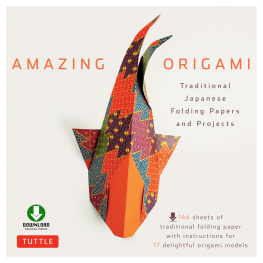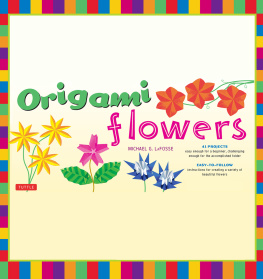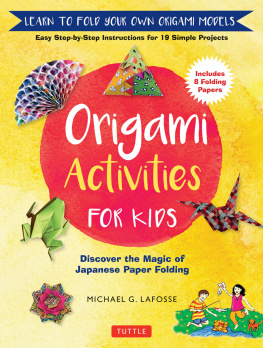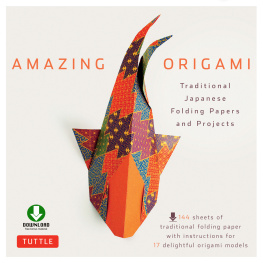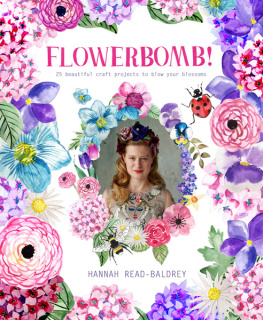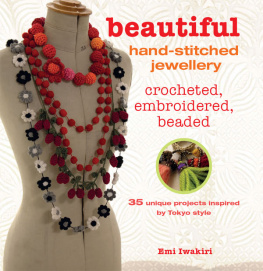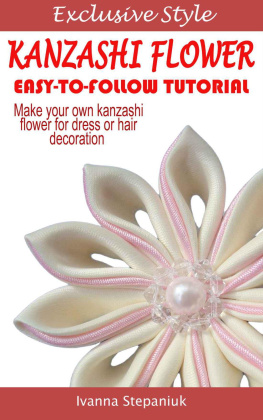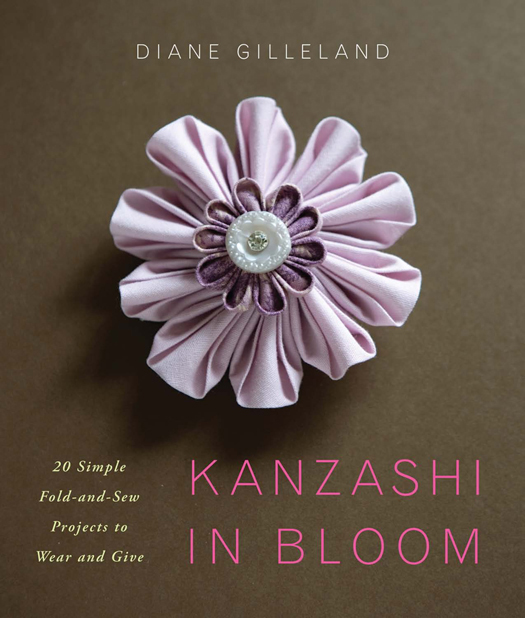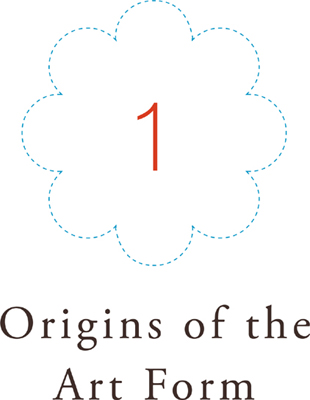Text copyright 2009 by Diane Gilleland
Style photographs copyright 2009 by Simon Lee
Process photographs copyright 2009 by Pam Harris
First published in 2009 by Watson-Guptill Publications,
Crown Publishing Group, a division of Random House Inc., New York
www.crownpublishing.com
www.watsonguptill.com
All rights reserved.
Library of Congress Cataloging-in-Publication Data
Gilleland, Diane.
Kanzashi in bloom : 20 simple fold-and-sew projects to wear and give / by Diane Gilleland.
p. cm.
Includes bibliographical references and index.
eISBN: 978-0-7704-3427-4
1. Silk flowers. 2. Decorative artsJapan. I. Title.
TT890.7.G45 2009
745.5943dc22
2009000292
Executive Editor: Joy Aquilino
Development Editor: Amy Vinchesi
Art Director: Jess Morphew
Designer and Photoshoot Art Director (Still Life): Chin-Yee Lai
Production Director: Alyn Evans
v3.1
For Mom
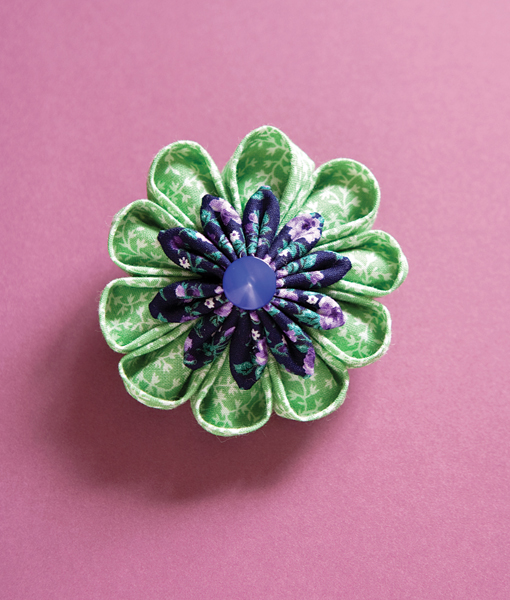
I always come back to flowers: Any time Im learning a new craft technique, I try some flower-based design or pattern to practice on. When I design beautiful objects, floral elements always seem to creep in somewhere. So its no wonder I fell head-over-heels for Kanzashi.
Kanzashi are beautiful Japanese flowers created by folding small squares of silk into petals and then gluing them together. You may have seen Kanzashi adorning the elaborate coiffure of a Japanese geisha, because thats their most traditional use. Were not exactly going to be traditional here, but we are going to learn to make Kanzashi. Actually, its important to note that Kanzashi are more correctly called Hana Tsumami Kanzashi. The Japanese word Kanzashi refers to the hair ornaments worn by Japanese women, while Hana translates as flower, and Tsumami refers to the process of folding the silk squares to make these flowers. However, as the online crafting community has begun to discover and embrace this craft, folded fabric flowers are often casually referred to simply as Kanzashi, and that is how I will refer to them in this book.
Speaking of online crafting, thats where I first discovered Kanzashi. One of the many benefits of the Internet is its power to introduce us to creative ideas from all over the world. I should say, though, that my particular method of making Kanzashi is quite different from the traditional Japanese method, which you can read more about in the first chapter. As much as I love to watch the traditional process in action, Ive also found it a bit challenging to learn. The online crafting community, being the inspiring and creative environment that it is, has found some simpler ways to make Kanzashi, and its from these methods that I evolved the techniques in this book.
Ive taught basic Kanzashi classes for a few years now, and its always fun to see how besotted my students become with this craft. The flowers are so elaborate and so beautiful that once you discover how simple they are to make, well, that becomes all you want to do. Those classes are really the seeds that started this book. In nearly every class Ive taught, the question eventually comes up: What can you do with these flowers? In my classes, we usually glue pins and magnets to them, but a world of possibility lies beyond that. Ive had a wonderful time dreaming up ways to incorporate Kanzashi into jewelry, clothing, bags, home decor, and gifts, to name but a few applications.
I hope youll enjoy learning to make your own Kanzashi flowers and that youll want to cover your world with them!
Kanzashi is both very old and very new. Look into its history and youll find a tradition of beautiful hair ornaments stretching back thousands of years in Japan. Today a handful of artisans still practice this art using traditional materials and techniques. Alongside these traditional Kanzashi masters you can also find a new generation of enthusiasts. Some are making flowers the traditional way while some are inventing new methods. This new generation of artists is exuberantly sharing its creations online, helping to spread fresh excitement about Kanzashi around the world.
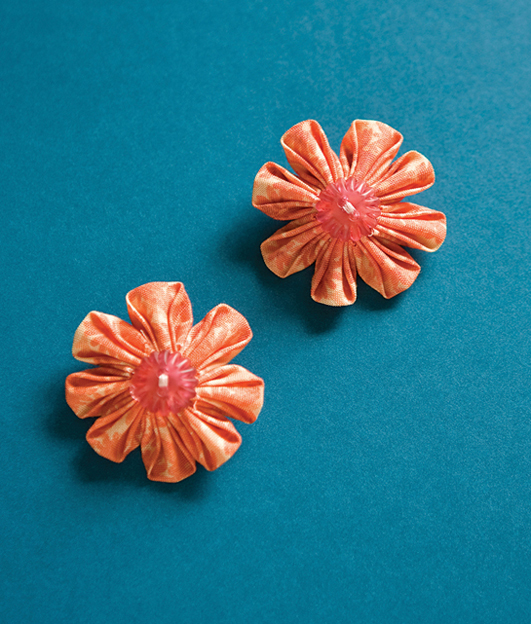

Image Kuniko Kanawa, atelierkanawa.com
Lets begin with a little history. Kanzashi first came into widespread use in Japan during the Edo Period, around 1600. Until that time, Japanese women wore their hair long and straight, sometimes reaching all the way to the floor, in a style known as taregami. But the Edo Period brought change in the form of elaborate, upswept hairstyles. Women began to curl, sculpt, and adorn their hair, using decorative combs and pins made from metal or lacquered wood: These ornaments were the first Kanzashi.
At the start of the Edo Period, Japan began urbanizing and trading with foreign countries, which gave craftspeople access to new materials and design influences. As a result, Kanzashi-making reached new heights in terms of color and style, and many different types of Kanzashi flourished. Bira Bira Kanzashi, for example, were made on a pronged hairpin, with shiny ornaments that dangled and tinkled in the breeze. Kushi Kanzashi were formed on large, rounded hair combs, usually made of tortoiseshell or lacquered wood. And Kogai, or sword, Kanzashi were designed using a rod-and-sheath configuration.
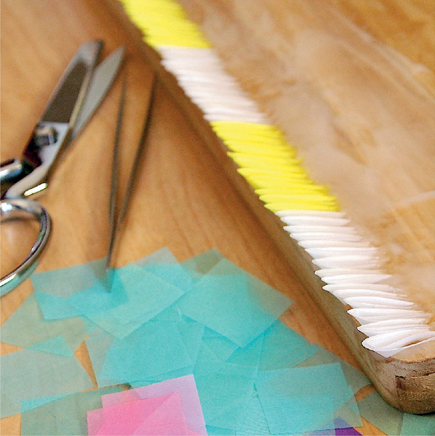
Here is a traditional Tsumami Kanzashi in progress, with pre-folded petals lined up in a pool of rice paste. Image Kuniko Kanawa, atelierkanawa.com
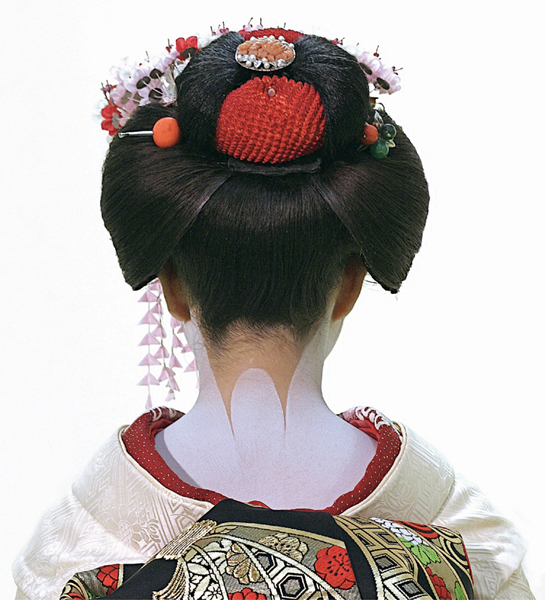
Kanzashi are most commonly seen adorning the hair of geisha and their apprentices, who are known as maiko.
Image iStockphoto.com/mura
Floral Kanzashi (which are called Hana Kanzashi in Japan) originated around the middle of the Edo Period. The art began with servants in the imperial court, who made silk flowers as a hobby. These flowers soon found their way onto Kanzashi pins and combs, and new artisans emerged to perfect and develop the technique.



